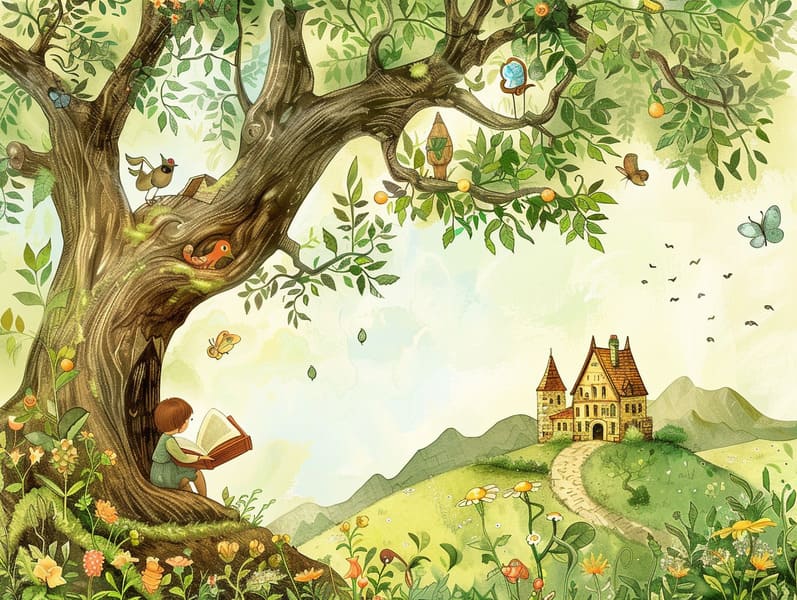The Creation of Old Fairy Tales and Their Lasting Charm.

Legendary fairy tales have timeless appeal. These narratives have been passed down from one generation to the next well before they were ever put on paper. They sprang from a variety of civilizations, including Indigenous traditions. They were initially transmitted among mature audiences, often carrying themes and messages related to the societal norms and beliefs of the time.
The famous Grimm duo, the two Grimm brothers, were among the first to collect and release many of these beloved fairy tales. Their collection, "Grimm's Fairy Stories," included tales like "Cinderella," "Hansel and Gretel," and "Little Snow White," which have since become pillars in the world of iconic fairy tales. Similarly, Hans Christian Andersen's fantastical narratives, such as "The Story of the Little Mermaid," and "The Duckling that Could," have touched hearts worldwide, securing their place in the pantheon of timeless fairy tales.
Despite their ancient origins, these tales remain as impactful as ever, especially as bedtime stories for kids. These enchanting tales are now available in different formats, including richly illustrated books, whimsical animations, and internet fairy tales.
Their unwavering allure can be connected to several whimsical characteristics:
Moral Lessons: Traditional fairy tales often provide important moral lessons. Tales like "The Tale of the Boy Who Cried Wolf" teach the benefit of truth, while "The Story of the Tortoise and the Hare" stress the traits of tenacity and humbleness. These tales offer kids clear distinctions between good and bad, guiding their moral compass in a gentle yet profound way.
Sympathy and Perception: Classic fairy tales frequently feature individuals facing challenges and problems, prompting kids to resonate with their struggles and boost their triumphs. For instance, "The Story of Beauty and the Beast" highlights the merit of seeing beyond looks to realize the inner spirit of a individual, fostering perception and discernment.
Cultural Comprehension: Many old fairy tales are steeped in the cultural contexts from which they originated. Reading these fairy tales can provide delightful insights into different cultures, fostering a sense of world respect and perception.
Imagination and Creativity: The imaginative elements in old fairy tales—talking animals—activate children’s creative thoughts. These narratives guide readers to magical realms, triggering creative dreams and a sense of amazement that persists a lifetime.
Classic fairy tales are not only mesmerizing but also educational. They serve as spellbinding tools in cultivating various cognitive and emotional skills in young ones. When ancient fairy tales are spoken out loud, they foster language development by introducing new language items and sophisticated sentence structures. This practice also improves auditory perception and mental focus, as young readers stay focused, anticipating to see what happens next.
Furthermore, discussing the themes and characters of ancient fairy tales can nurture evaluative more info skills and reasoning skills. Little ones are shown to discover patterns, anticipate outcomes, and figure out cause and effect. These talks also ease young readers communicate their thoughts and feelings, nurturing their emotional intelligence.
In today’s technological age, the existence of digital storybooks has made these narratives more accessible than ever. Internet resources and mobile apps feature comprehensive collections of classic fairy tales that can be enjoyed or heard anytime, anywhere. Fairy tales recited are particularly favored, giving an immersive method for children to enjoy these captivating stories. Spoken stories and voiced videos transport characters and settings to life, often supplemented by spellbinding sound effects and tunes that heighten the storytelling journey.
The enduring charm of ancient fairy tales lies in their ability to transform to modern days while keeping hold of their core messages. Contemporary takes of these narratives often show more varied characters and modern settings, making them relevant to today’s audience. However, the basic principles of bravery, kindheartedness, and even-handedness remain unchanged, continuing to move audiences of all ages.
Ancient fairy tales also offer a sense of solace and closeness. They share a organized narrative with a recognizable beginning, middle, and end, often concluding with the ending of conflicts and the triumph of good over evil. This constancy can be encouraging for kids, spreading a sense of unwaveringness in an unstable world.
Classic fairy tales continue to enthrall and edify new generations, maintaining their delight and impact in modern society. As children's night stories, they make available a perfect blend of allure and teaching, backing moral values, empathy, and creativity. The accessibility of free fairy tales online and the popularity of fairy tales recited make sure that these ancient stories remain accessible to new generations.
By conserving and imparting these fairy tales, we continue to celebrate the rich tapestry of lore and cultural heritage. Whether you are browsing a vibrantly illustrated book, seeing a cyber collection, or listening to an narrated book, the captivation of classic fairy tales is always within reach. These narratives reveal of the immortal presence of storytelling and its ability to bring us together across centuries and lands.
Even if you are enjoying a colorful picture book, accessing a electronic library, or hearing an spoken story, the allure of old fairy tales is always within reach.
These tales teach us of the unwavering essence of fairy tales and its ability to hold us together across generations and cultures, making a tie that enchants and educates alike.